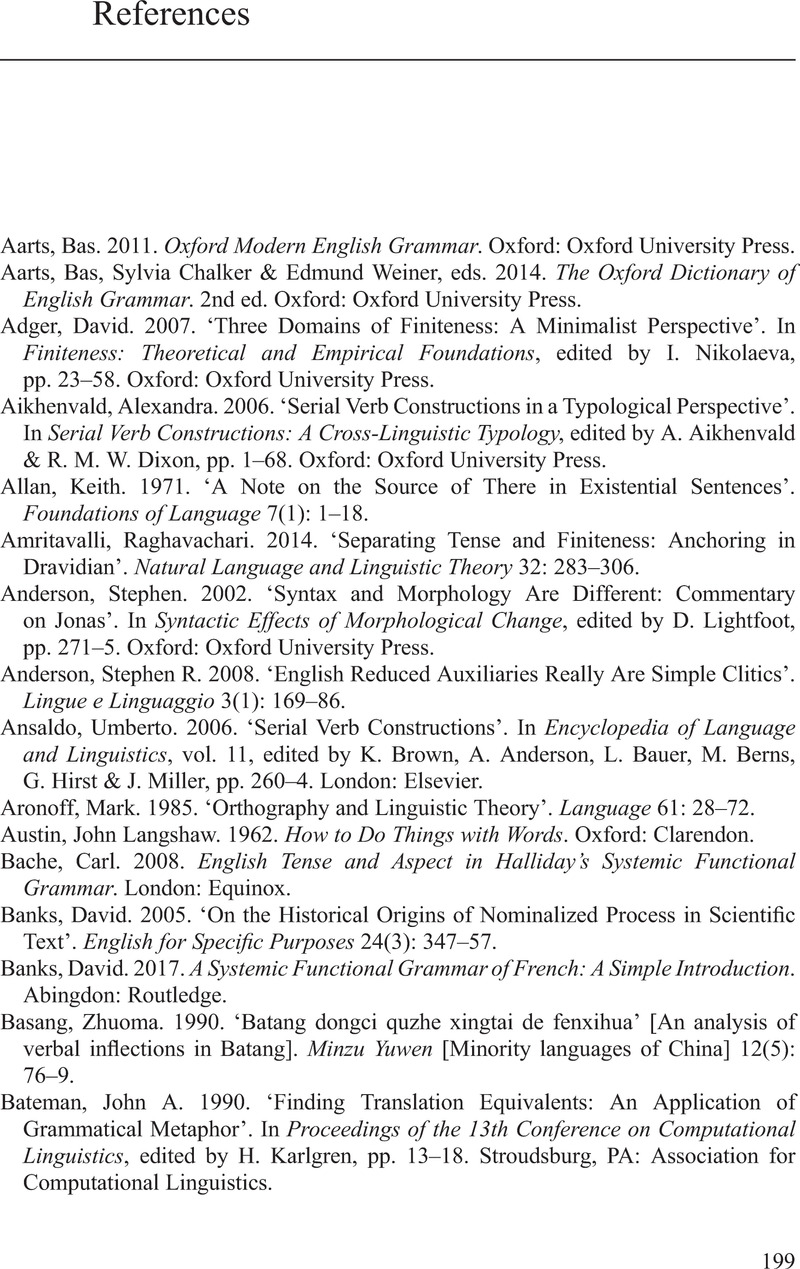Book contents
- Non-Finiteness
- Non-Finiteness
- Copyright page
- Contents
- Figures
- Tables
- Preface
- Acknowledgements
- Symbols and Abbreviations
- Leipzig Glossing Abbreviations
- 1 Introduction
- 2 Non-finiteness in the Literature
- 3 Theoretical Foundations
- 4 Basic Process Relations as One Solution to the Controversy
- 5 Non-finiteness as the Bridge for Process Compression
- 6 Revisiting the Controversial English Constructions with Non-finiteness
- 7 Revisiting the Controversial Chinese Constructions with Non-finiteness
- 8 Conclusion
- References
- Index
- References
References
Published online by Cambridge University Press: 21 April 2022
- Non-Finiteness
- Non-Finiteness
- Copyright page
- Contents
- Figures
- Tables
- Preface
- Acknowledgements
- Symbols and Abbreviations
- Leipzig Glossing Abbreviations
- 1 Introduction
- 2 Non-finiteness in the Literature
- 3 Theoretical Foundations
- 4 Basic Process Relations as One Solution to the Controversy
- 5 Non-finiteness as the Bridge for Process Compression
- 6 Revisiting the Controversial English Constructions with Non-finiteness
- 7 Revisiting the Controversial Chinese Constructions with Non-finiteness
- 8 Conclusion
- References
- Index
- References
Summary

- Type
- Chapter
- Information
- Non-FinitenessA Process-Relation Perspective, pp. 199 - 226Publisher: Cambridge University PressPrint publication year: 2022

